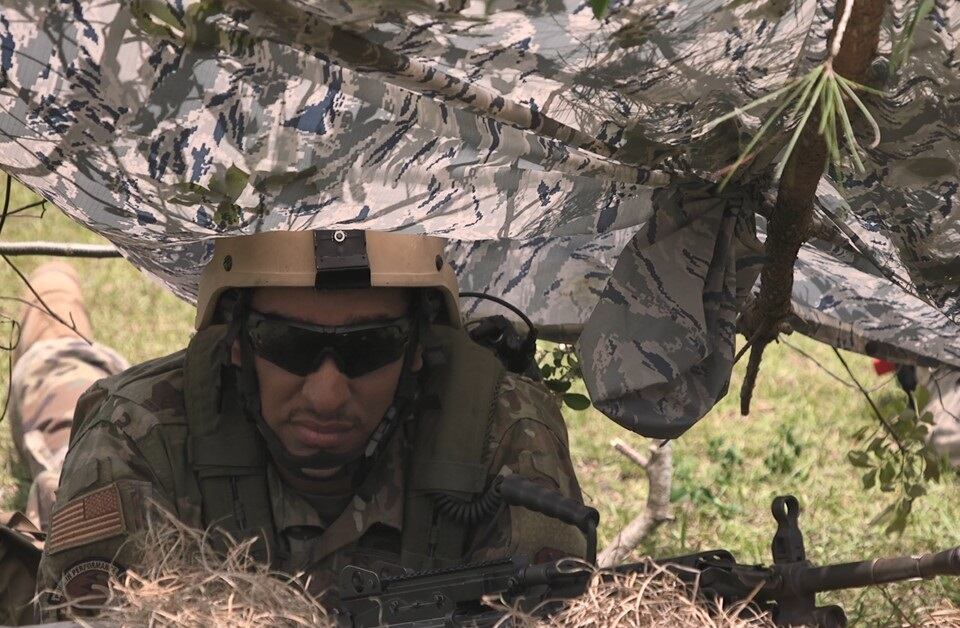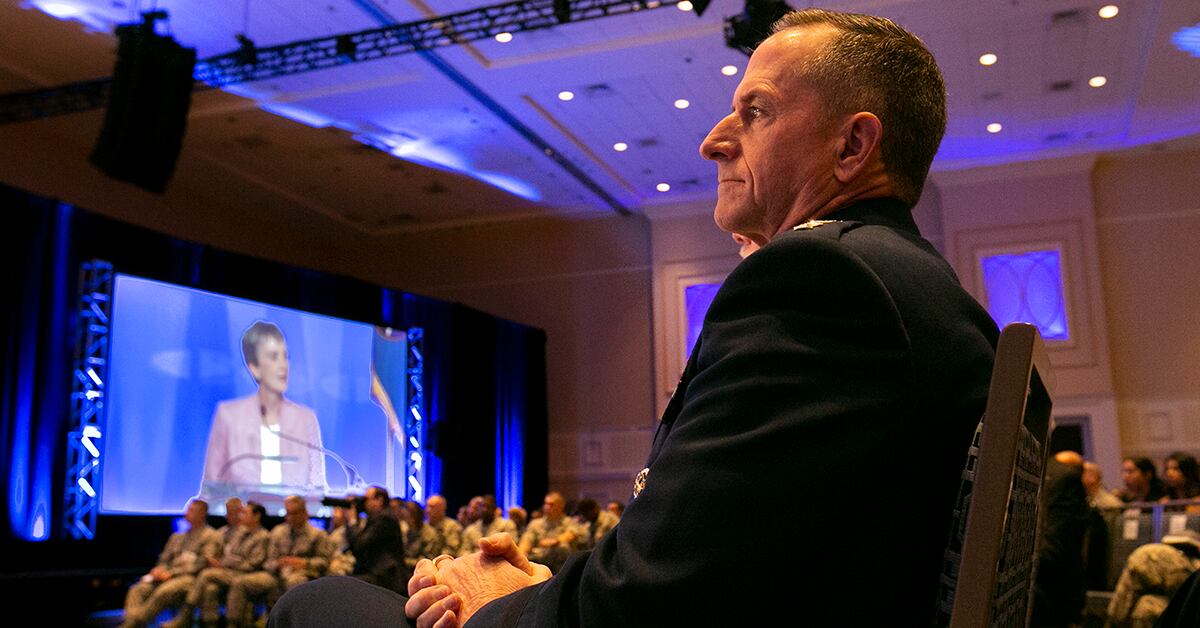The Air Force has tested a new plan for setting up airfields in austere environments — or even under fire — using small teams of airmen, each doing multiple jobs.
The Combat Support Wing concept, which concluded its final test at locations including the Kinston Regional Jetport in North Carolina on May 12, studied how three teams of about 30 airmen each, from 15 different bases, would establish and operate an airfield in such an environment. In a Tuesday release, the Air Force Installation and Mission Support Center said the airmen had to defend the base and refuel and rearm F-15Es using a variety of skills they had learned beginning in mid-April.
Airmen would wear multiple hats. So, under this concept — weapons loaders could drive refueling trucks, the release said, or security forces defenders could refuel jets, or avionics specialists could provide airfield security, all while still performing their primary duties.
“We’ve seen monumental improvements in the ability of our airmen to do things outside of their normal career fields and the speed at which they’re able to refuel and rearm jets,” Brig. Gen. Brian Bruckbauer, director of expeditionary support and innovation at AFIMSC, said in the release.
Photographs from the exercise showed airmen from several Air Force specialty codes performing hot-pit refuelings on F-15Es — in which a jet is refueled on the ground while its engines are still running, to allow it to get back in the air faster during intense combat — as well as setting up defensive perimeters and operating refueling trucks.
“We went from individual troops who had their skill-set and a vague understanding about what everyone else was doing, to now, where you’ve got maintainers manning defensive fighting positions and cops helping refuel jets,” Master Sgt. Jason Knepper, an Air Force Security Forces Center flight chief, said in the release. Knepper said he’s seen “tons” of progress since the training began.

The Combat Support Wing concept will also be a part of the Rapid Force exercise scheduled for July 10 to 26 in Europe.
The Air Force hopes this concept will allow the service to rapidly deploy small, agile teams to potentially contested areas in support of the Pentagon’s revised National Defense Strategy. If it works, AFIMSC said, it “could be a game-changer.”
Under the new National Defense Strategy, the military has begun shifting its focus away from fights against violent extremist groups such as the Islamic State, and toward peer or near-peer nations such as China, Russia or North Korea as part of the so-called “return to great power competition.”
RELATED

Air Force Chief of Staff Gen. Dave Goldfein, in an address last year to the Air Force Association, said the service needs to return to its expeditionary roots and be able to quickly deploy and set up new bases, even under fire, to prepare for future conflicts. Goldfein also said at AFA’s Air Space Cyber conference last September that in wars against a peer nation, the Air Force can’t count on deploying to places with well-established and secure bases such as Al Udeid Air Base in Qatar.
The capstone of the Combat Support Wing test was the final part of a phased rollout over the past year, AFIMSC said. The 4th Fighter Wing at Seymour Johnson Air Force Base in North Carolina hosted the capstone exercise, which tested “hub-and-spoke” operations of a forward operating base at Seymour Johnson, as well as three forward operating locations at Kinston, Moody Air Force Base in Georgia, and MacDill Air Force Base in Florida.
“We had at least 15 different Air Force specialty codes come in to attack the problem of how to conduct integrated combat turns with as few people and the smallest logistics footprint as possible,” said Col. Erik Rundquist, commander of AFIMSC Detachment 8 at Langley Air Force Base in Virginia, who played a key role in designing the exercises.
The Combat Support Wing concept grew out of AFIMSC’s 2017 Installation and Mission Support Weapons and Tactics Conference. The expeditionary support directorate at AFIMSC is now expected to send a report to Air Force leaders analyzing how effective the concept was, and making recommendations on how to use the concept in operational plans.
Stephen Losey is the air warfare reporter for Defense News. He previously covered leadership and personnel issues at Air Force Times, and the Pentagon, special operations and air warfare at Military.com. He has traveled to the Middle East to cover U.S. Air Force operations.





